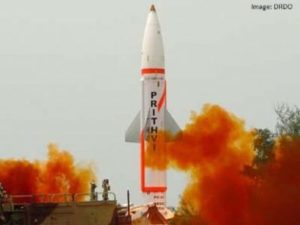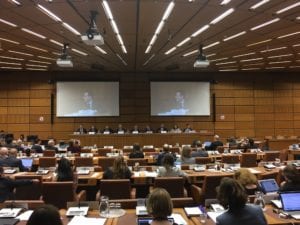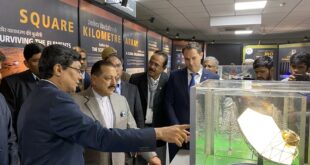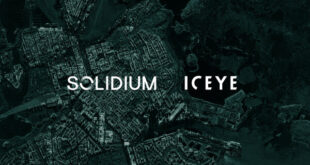 As part of the partnership between SpaceWatch.Global and the European Space Policy Institute, we have been granted permission to publish selected articles and briefs. This is ESPI Briefs No. 31: ‘India’s ASAT Test Amidst Global Ambiguity’, originally published in April 2019.
As part of the partnership between SpaceWatch.Global and the European Space Policy Institute, we have been granted permission to publish selected articles and briefs. This is ESPI Briefs No. 31: ‘India’s ASAT Test Amidst Global Ambiguity’, originally published in April 2019.
1. Overview
On March 27th, 2019, the Indian Ministry of Foreign Affairs announced the successful execution of an anti-satellite (ASAT) missile test launched from Dr. APJ Abdul Island launch complex, which destroyed an Indian satellite in Low-Earth Orbit (LEO). The so-called Mission Shakti was conducted by the Defence Research and Development Organisation (DRDO) and reportedly was a demonstration of a hit-to-kill ballistic missile interceptor.

This ASAT test – announced by the Indian government and detected by the U.S. military’s early warning and surveillance network – makes India the 4th nation to demonstrate such capabilities after the United States, Russia and China. Beyond their implications for possibly increased deployment of weapons in space, ASAT weapon tests are also heavily scrutinized due to their contribution to space debris creation. India claims that debris created as a result of the test will quickly decay and have very limited consequences for space safety. The impact, which occurred at an altitude of 283km should result in most of the debris fragments polluting the surrounding environment for around two months.
Prime Minister Narendra Modi hails this test, which was conducted with domestic technology, as a moment of national pride and a demonstration of India’s status as a space power. While reaffirming India’s commitment to the peaceful use of outer space, he also stressed the importance of space for India and for the World, explaining that “in such a condition, defending and securing these valuable assets becomes equally important.”
2. Rationales…
Solely interpreting this ASAT test as a demonstration of India’s capability to practically defend and secure its own space assets may be an incomplete assessment. While some ASAT technologies cause damage that could be reversible, they are – by the nature of their purpose – not defensive, but rather used to disrupt, destroy or deny other countries access to their own satellites. This test is more a product of India’s foreign and defence policy than it is of India’s (still awaited) official space policy.
The last decades in particular have seen a shift in India’s foreign as well as military posture, including in space. Historically, India has pursued a foreign policy doctrine of non-alignment, projected a defensive posture in regional and international politics and has heavily emphasized the almost exclusive use of space to address infrastructure and socio-economic needs for its growing population.
Since the turn of the century however, this stance has progressively diluted – giving way to more prominent pursuit of military space applications and a wish to take on a stronger role in the regional and international arena. This policy shift can be attributed to factors including regional security tensions with Pakistan and China, the beginning of Prime Minister Narendra Modi’s term as well as the 2007 and 2010 Chinese ASAT tests. In 2010 the DRDO Director General V.K. Saraswat acknowledged Indian pursuit of ASAT capabilities in order to neutralize enemy’s satellites or deny access to them, announcing just one year later that the building blocks had been put into place to target satellites in altitudes of up to 1000km and beyond.
Therefore, while space has indeed taken on an increased importance for India domestically and internationally, India clearly aspires to leave behind the status of a limited international space actor and a mere recipient of technology and instead seeks to reach the status of an established space power. Thus, the ASAT test has, most importantly, consequences for the perception of India by the international community. Satheesh Reddy, Chairman of DRDO, explained that the “best way of defence is to have deterrence”. Along this statement, rather than a demonstration of capability, it is the demonstration of readiness – which India made to show it is not just a ‘paper tiger’.
Furthermore, although officially the timing of this test was scientifically and technologically driven, in light of upcoming elections and regional tensions with Pakistan over the Kashmir region, the ASAT test presents an opportunity for PM Modi to showcase a tough stance on national security issues.
3. And International Reactions
International reactions to the test have been mixed and reflect the global ambiguity on this topic. Jim Bridenstine, NASA Administrator, criticized the test as irresponsible and possibly providing a precedent to other nations and considers it incompatible with the future of human spaceflight, due to the proximity to the ISS orbit of some debris created. DRDO Chairman Reddy claims deliberate steps were taken to minimize debris creation and thus risks to space assets. However, the U.S. Space Situational Awareness (SSA) network tracked up to 300 pieces of debris resulting from the Indian test, with some pieces even crossing the ISS apogee at 410km. The exact number will likely grow in time as fragments spread out.
With regard to space defence implications, the Russian Ministry of Foreign Affairs acknowledges India’s commitment against weaponization, however advocates for a legally binding instrument to prevent an arms race in outer space and attributes India’s decision to test this ASAT to a degraded international security and arms control infrastructure, supposedly undermined by the United States. India’s neighbours, China and Pakistan reacted promptly as well, the former releasing a rather subdued statement on its hope for a collaborative effort towards “peace and tranquillity in outer space”, while the latter condemned increasing militarization of space without mentioning India specifically.
While the Indian ASAT test indeed is precisely that – a test – and not the deployment of an operational ASAT programme, it adds to the increasing number of events at technical, political, and security level that push the boundaries of the international legal and diplomatic framework. The lack of consensus reached by the Group of Governmental Experts on the PAROS, which convened in March 2019, is but one indication of this challenge.
4. Considerations for Europe

Notably, there has been a lack of official statement from European institutions, apart from a generic remark by the European Union on the EU’s commitment to safeguarding the long-term use of outer space for peaceful purposes at the occasion of a general exchange of views on space debris mitigation during the 58th session of the Legal Subcommittee of UNCOPUOS. Given Europe’s past stance on debris mitigation and the use of weapons in outer space, an official statement could have been expected. In fact, given its projected role of purveyor of behavioural standards in space, expressed through the EU proposition of the International Code of Conduct (ICoC), the silence seems particularly inconsistent with Europe’s purported posture.
As an increasing number of states are showing a readiness to test ASAT technology, the way forward is unclear. Will the Indian ASAT test foster a perception that ASAT technology is unproblematic as long as test are conducted while mitigating space debris creation? Does it signal a move towards new asymmetric threats or the challenging of existing power structures and notions of supremacy in space? Should Europe support the enactment of international ASAT test guidelines, as suggested by UNIDIR?
Europe’s need to react to this latest ASAT test does not stem from a pressure to condemn this particular test based on misconstrued notions of its significance or gravity. Rather, the reaction is needed in light of the increasing and repeated challenges to the international and diplomatic framework. Silence on this matter furthermore opens the arena for speculation on a lack of European coherence, on ulterior motives or on European passivity vis-à-vis global challenges. Europe needs to clearly and credibly position itself and participate in the creation of a way forward.
Rights reserved – this publication is reproduced with permission from ESPI. “Source: ESPI “ESPI Briefs” No. 31, April 2019. All rights reserved”
For more articles please visit ESPI website (www.espi.or.at).





